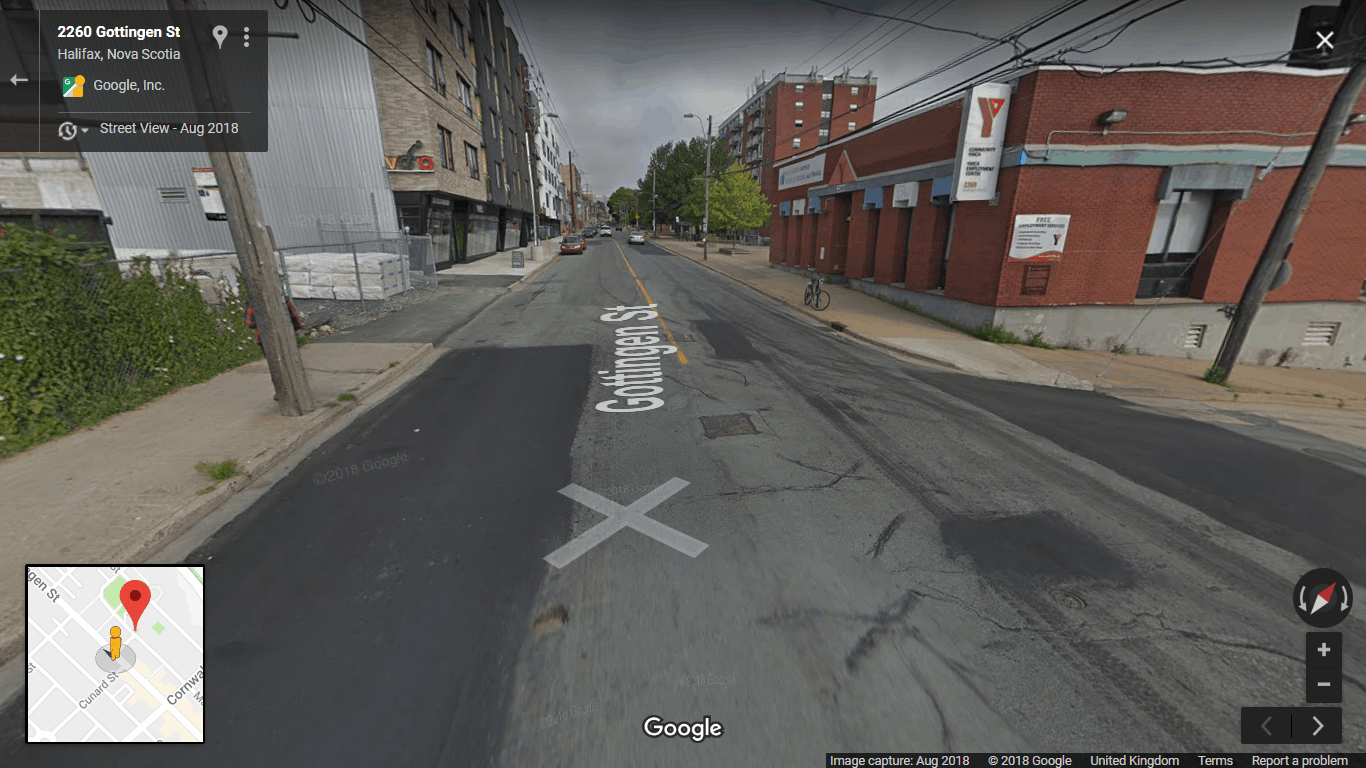
KJIPUKTUK (Halifax) – The most recent pedestrian fatality, at Gottingen Street, the fourth of this year, involves once again unforgiving infrastructure for those on foot which should have been mitigated during recent efforts to remodel it with the aim of achieving a “complete street”, i.e. to better serve the needs of vulnerable road users and transit.
We don’t know much about the specific circumstances of the incident, other than that a pedestrian named Willard, lovingly remembered in The Coast, was hit by a truck near to the YMCA on Gottingen Street. I am not going to speculate here about what happened. First and foremost, I and very many others are deeply saddened by this tragedy and I offer my heartfelt condolences to family and friends.
We do know the road environment played a part because infrastructure dictates safety on streets for vulnerable road users more than any other factor. Not something we know much about from personal experience in Halifax as our streets are built to manage traffic flow, not safety for all.

Gottingen is a foot-heavy street lined with a considerable amount of low rise apartment blocks, businesses and walk in services which make up the commercial and entertainment heart of the North End. Described by a local resident writing for The Coast as “over-spilling with life” and “home to such diverse groups of people”, it reflects the diversity and street-life which many visitors and residents love most about Halifax.
Gottingen is a dangerous street because it is wide and straight enough for traffic to build up speeds which are unsafe for vulnerable road users. Recently, an additional lane for buses has replaced parking at peak times, so in the section of the road where the man was hit on Friday there are now three traffic lanes. But the “complete street” enhancements do not include anything designed to ensure traffic slows down to a safe speed for vulnerable road users, increasingly accepted to be 30kph.
Result: Gottingen is a half-baked complete street. More traffic lanes and convenience for motorised transport is not good news for vulnerable road users unless there are measures to slow traffic and create safe crossing points at frequent intervals. What this street needs more than anything else is not re-engineering to achieve improved efficiency for transit, but traffic calming and measures to make the street much more enjoyable, less polluted, and safe for pedestrians and cyclists.
On a foot-heavy street like Gottingen, pedestrians will cross the road directly to access services like the YMCA rather than re-routing via the nearest crosswalk. Pedestrian focused road design allows for that and creates safe crossing points at “desire lines”, where we know pedestrians cross by habit and necessity.
Gottingen is an early attempt by our municipality at a complete street, so perhaps it is inevitable that mistakes will be made in our eagerness to embrace transit priority routes. However there are plenty of good examples of streets similar to Gottingen in other parts of the world which have been enhanced successfully to achieve a design which prioritises the safety and convenience of people on foot and cyclists over motorised traffic.
The World Health Organisation recommends that residential and commercial streets should have traffic calming measures such as road narrowing, speed bumps, rumble strips and raised platforms in areas pedestrians cross. Critically, they also recommend that through-traffic and freight is separated from local neighbourhood access and commercial centres.
Engineering measures that enhance ease and safety for pedestrians and cyclists over efficiency for motorised transport could have brought out the best qualities enjoyed by Gottingen and ensure that its status as the life and soul of the North End is maintained for decades to come.
Instead, we have an early tragedy that is indicative of how carefully local residents and service users will need to tread to be safe, and how hard our authorities will need to work to ensure the road best serves its local residents and businesses.
If you walk, cycle or use a wheelchair and are affected by road safety issues, please join HRM Safe Streets for Everyone. If your local crosswalk needs a crosswalk flag, please contact the Crosswalk Safety Society. Please remember to report issues affecting your safety to our municipal authorities using the 311 service.
With a special thanks to our generous donors who make publication of the Nova Scotia Advocate possible.
Subscribe to the Nova Scotia Advocate weekly digest and never miss an article again.




What a chore to read this sanctimonious drivel of an article.
I completely disagree with the whole methodology of how this diatribe was cobbled together and passed editorial muster.
The writer correctly respects the passing of the pedestrians, as do we all. But then places the entire emphasis against drivers and cars, even though Gottingen is shared.
I live on the parallel street, know it well as a driver and pedestrian. I question how often the writer has used the street as either.